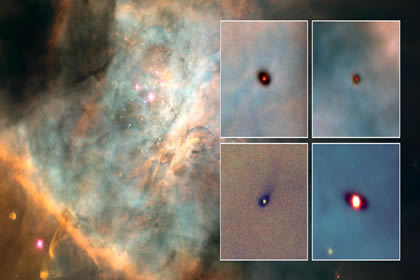
When I started with astrophotography, I heard of N.I.N.A and I thought it was just another open source software that will perform some basic tasks. But I was wrong! I will be sharing my experience and fustrations and as well the main features of N.I.N.A. by going through session step-by-step.

Stars are born in clouds of gas and dust. One such stellar nursery is the Orion Nebula, an enormous cloud of gas and dust many light-years across. Turbulence from deep within these clouds creates high density regions called knots. These knots contain sufficient mass that the gas and dust can begin to collapse from gravitational attraction. As it collapses, pressure from gravity causes the material at the center to heat up, creating a protostar. One day, this core becomes hot enough to ignite fusion and a star is born. Not all of the material in the collapsing cloud ends up as part of a star — the remaining dust can become planets, asteroids or comets … or it may remain as dust. Scientists running three-dimensional computer models of star formation predict that the spinning clouds of collapsing gas and dust may break up into two or three distinct blobs. This would explain why the majority the stars in the Milky Way are paired or in groups of multiple stars.

Most stars form in multiple star systems, though this formation process is not completely understood. The groupings of stars that form together can vary from a few stars to many hundreds or thousands. The stars in each cluster have a variety of masses. The most massive stars are rare, while the least massive stars are the most numerous. Hubble has probed star clusters of all sizes and uses spectroscopy to determine the detailed chemistry in star cluster members. By taking precise observations of star cluster members, scientists using Hubble can determine their luminosities (intrinsic brightnesses) and temperatures. This helps refine our understanding of star formation, stellar evolution and the physics of the theoretical models used to explain these phenomena. The most massive star clusters, containing tens and hundreds of thousands of stars, were mostly formed early on in the universe, about 13 billion years ago. These massive clusters, called globular clusters, persist today although the stars in them have evolved over time. Cluster characteristics are tracers of the earliest times of cosmic star formation. Hubble observations have revealed subtle differences in globular clusters, their chemistry and, in some cases, evidence that these clusters actually have multiple generations of stars within them.